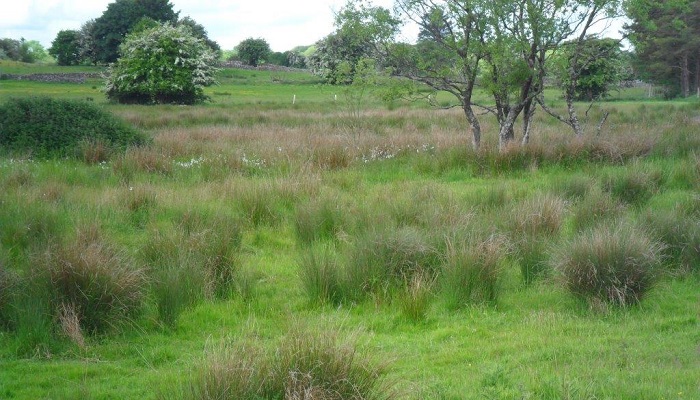MCPA and rushes

In 2020 MCPA commonly used to control rushes was responsible for 46 out of 91 detected pesticide breeches. MCPA is water soluble, it does not bind to soil particles and therefore more prone to leaching and run-off to nearby waterbodies. Mary Roache, ASSAP Advisor Mayo, talks about Rush Spraying here
Add to this the fact that rushes thrive in poorly drained areas with a water table near the surface and you can see why run-off can potentially occur. Remember a single drop of pesticide lost to a water body such as a typical small stream (1 meter wide, 0.3 meters deep), for example, can be enough to breach the legal limit for pesticides along 30km of its length. It is not necessary or indeed sustainable to be constantly applying sprays and they should not be looked on as the main method to control weeds. The presence of rushes in a field do not make the field ineligible for payment once it is being grazed.
Some Non- Chemical methods of control
- Good grazing management and appropriate stocking rates.
- Taking a soil test and applying nutrients required.
- Appropriate drainage if required.
- Use of a topper/mower for weed control.
To minimise spray drift with MCPA products consider using low drift nozzles or switch to using Glyphosate products in a weedlicker instead.
Always Ensure That
- There is no heavy rain forecast for 48 hours
- Ground conditions are good, no standing water in the field
- Rates of application are not exceeded
- The correct method of application is used (e.g. only boom sprayer for MCPA)
- There are calm conditions if applying product using a boom sprayer
- Buffer zones are observed (e.g. a 5m buffer zone for MCPA)
- Empty containers are triple rinsed before being disposed of properly
- You never fill your sprayer from a watercourse
- MCPA shall not be used from 30th September to 1st
This brief video clip (30 secs), gives an overview of MCPA and Rushes as Mary Roache, Teagasc advised
In this 5 minute video, Mary Roache ASSAP Advisor covers the detail of spraying rushes
For more information see Water Quality Week
